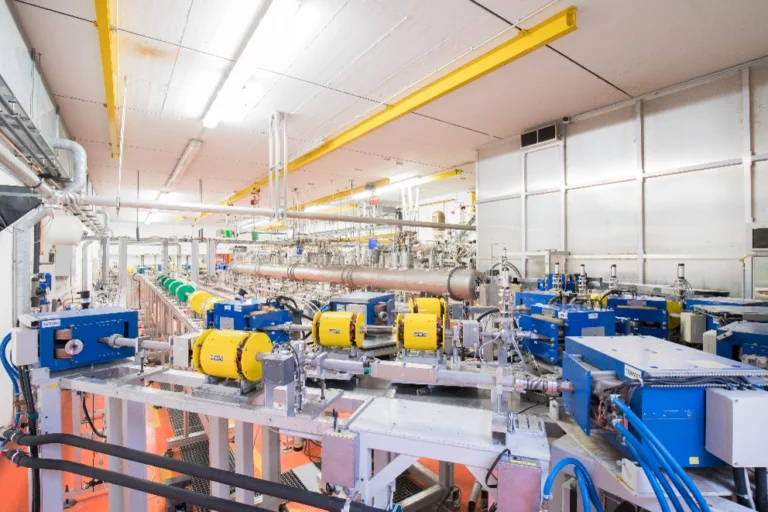Home » What we do » Working Area 3
Home » What we do » Working Area 3
Working Area
The rapid neutron capture process can be understood as a (n,γ)-(γ,n) equilibrium interrupted by Beta-decays until most of the neutrons are captured and matter decays to stability. During this phase, properties of the fission process of exotic nuclei have a strong impact.

When the (n,γ)-(γ,n) equilibrium breaks, also called freeze out, there is a competition between neutron captures and beta decays. The neutron captures rates during the decay to stability are critical to determine the final abundance pattern that can be compared to observations from our Sun and from the oldest stars.
We will address the need for improved fission models with precision experiments at the S-DALINAC in Darmstadt. The electron beam from S-DALINAC will be used to trigger fission and the fission products will be detected with high angular resolution.


Improvements of the freeze-out scenario requires improved neutron capture cross sections of short-lived isotopes. Here we will use a new technique – surrogate reactions in combination with a storage ring in inverse kinematics.


The experiments will be performed in inverse kinematics with the light reaction partner as a gas at rest and the ions revolving in a storage ring.
Nucleosynthesis of heavy elements
In this Working Area ELEMENTS will provide new information on neutron-capture rates on neutron-rich nuclei (Litvinov, Reifarth) and on properties of transuranium actinides that provide constraints for the fission cycle of the r-process of nucleosynthesis in BNS mergers (Arnold, Block, Galatyuk, Martínez-Pinedo, Pietralla).
Under these extreme conditions, the involved nuclides are highly ionized, which can dramatically change their decay characteristics from those known in neutral atoms. ELEMENTS will interconnect the individual storage-ring complexes of GSI and FAIR to boost experimental capabilities for corresponding precision experiments (Block, Litvinov, Reifarth, Stöhlker).
Penning-trap mass spectrometry will provide nuclear masses with high accuracy. The high resolving power will be used to prepare pure data samples selecting specific nuclear isomeric states for decay spectroscopy (Arcones, Arnold, Block, Pietralla). This work will open new routes to determine exotic decay branches.
Working Area 3 Representative: Yury A. Litvinov
Working Area 3 Deputy Representative: Michaela Arnold
Principal Investigators: A. Arcones, M. Arnold, M. Block, T. Galatyuk, Y. Litvinov, G. Martínez-Pinedo, N. Pietralla